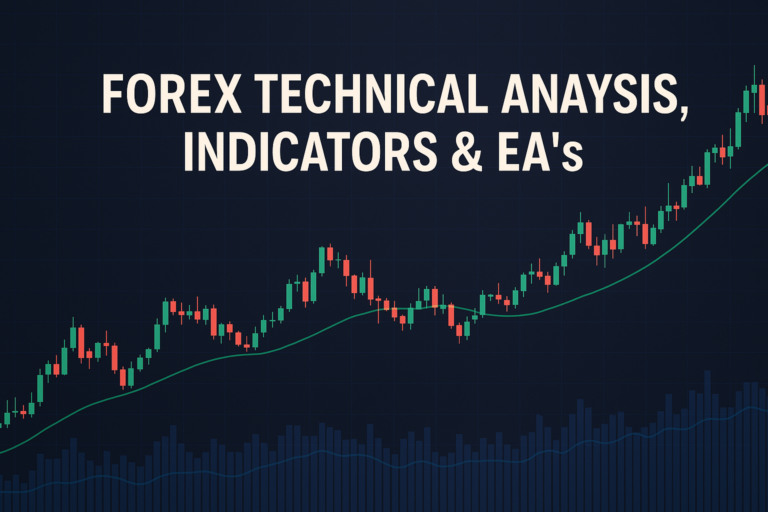
Orders getting stuck in execution can frustrate traders, but understanding and addressing the issue can lead to improved trading outcomes.
In the fast-paced world of Forex trading, every second counts. Traders often face a frustrating problem: orders getting stuck in execution. This situation can make or break a trading day, especially when the market is volatile. Understanding this issue is crucial for both beginners and professional traders as it can lead to significant losses if not managed properly.
Many traders struggle with orders getting stuck in execution due to a lack of understanding of how the Forex market works. They may find themselves in a situation where they miss out on profitable trades or, worse, incur heavy losses. It’s essential to grasp the reasons behind this problem to avoid it in the future. By learning effective strategies, traders can navigate these troubled waters with confidence.
One way to enhance your trading experience is by utilizing mt4s. This tool can help you stay informed and make better trading decisions.
Understanding the Problem
Orders getting stuck in execution happens when a trader tries to place a trade, but it does not go through as expected. This can occur for various reasons, including technical issues with the trading platform or market conditions. For example, during high volatility, like when major economic news is released, the market can move too quickly for orders to be executed effectively.
Imagine you’re a trader waiting for the right moment to sell a currency pair. You hit the “sell” button, but instead of executing the trade, your order sits there, stuck. Meanwhile, the market price moves away from your desired entry point, and you miss your opportunity. This situation can create frustration and confusion, especially for those new to Forex trading.
Solutions for Orders getting stuck in execution
To resolve the issue of orders getting stuck in execution, here are some step-by-step solutions:
- Check Your Internet Connection: A stable internet connection is essential. If your connection is slow or drops, orders may not get executed.
- Use a Reliable Broker: Choose a broker known for fast execution. Do your research, read reviews, and test their platform.
- Optimize Your Trading Platform: Ensure your trading platform (like MT4) is updated and functioning properly. Keep it free of unnecessary plugins that may slow it down.
- Place Limit Orders: Instead of market orders, use limit orders. They can help you control your entry and exit points better.
- Avoid Trading During Major News Events: Be cautious when trading during significant economic announcements. The market can be very volatile during these times.
- Review Your Trading Strategy: Ensure your strategy is sound. A good strategy can help you make informed decisions, reducing the chances of orders getting stuck.
- Contact Your Broker: If you repeatedly experience issues, don’t hesitate to reach out to your broker for assistance. They can provide insights or solutions.
Another common issue traders face is the delayed order. Understanding how to manage it can help improve your trading experience.
Frequently Asked Questions
How do I detect this issue in real-time?
To detect orders getting stuck in execution in real-time, keep an eye on your trading platform for any alerts or error messages. If you notice a delay in the execution of your trades, check your internet connection and the broker’s server status. Watching for unusual market movements can also help you anticipate when orders might struggle to execute.
Can brokers legally do this?
Yes, brokers are legally allowed to execute trades at their discretion. However, they should provide transparent information about their execution policies. If you believe your broker is unfairly delaying your orders, you may want to consider switching to a more reliable broker.
What tools can I use to prevent this?
Utilizing tools like economic calendars and news alerts can help you stay informed about market events that may cause volatility. Additionally, using a reliable trading platform that offers real-time data can minimize the chances of orders getting stuck in execution.
Is this problem more common in specific market conditions?
Yes, orders getting stuck in execution is more common during high volatility periods, such as major news releases or market open and close. During these times, market liquidity can drop, leading to delays in execution.
Conclusion
Orders getting stuck in execution is a common issue faced by Forex traders. By understanding the reasons behind this problem and implementing the solutions provided, traders can better manage their trades. Remember, staying informed and refining your trading strategies is key to overcoming this challenge.
User Engagement & Encouragement Stay positive! Every trader faces challenges. The key is to learn from them and keep improving your strategies.
Recommended Next Steps
After understanding orders getting stuck in execution, consider these next steps:
- Research reliable brokers known for fast execution.
- Utilize trading tools like MT4 for better management of your trades.
- Stay updated on market news and events that may impact trading.
- Practice using demo accounts to refine your skills without risk.
Mastering forex requires learning from the best—start with this NerdWallet, MQL5
Expand Your Knowledge
- 📌 Forex Trading Learning Road Map
- 📌 Forex Trading Course with no Fees
- 📌 Forex Trading Issues, Problems, and Solutions
- 📌 Forex Daily Forecast & Live Updates
- 📌 Forex Fundamental & News Analysis: Tomorrow’s Market Movers & Trade Opportunities
- 📌 Forex Education Hub: Learn & Profit
- 📌 Forex Technical Analysis, Indicators & EA’s
Start Trading Today
Ready to take your forex trading to the next level? Open an account with Exness, one of the most trusted platforms in the industry. 👉 Sign Up Now and start trading with confidence!
Exness stands out with ultra-low spreads for mini traders, instant withdrawals, and zero spread accounts for pro traders. Trusted since 2008, Exness offers lightning-fast execution, no hidden fees, and a secure, transparent trading environment—giving you the edge you need to succeed. 🚀 Join now and trade smarter!
Watch this helpful video to better understand Orders getting stuck in execution:
Note: The video above is embedded from YouTube and is the property of its original creator. We do not own or take responsibility for the content or opinions expressed in the video.
In the YouTube video featuring Pipsico, she discusses common issues that traders face when trying to place orders in MetaTrader, a popular trading platform used for Forex trading. One of the primary reasons traders might encounter difficulties is due to incorrect calculations or misunderstandings regarding how stop losses and take profits work. For instance, if a trader is selling a currency pair, the stop loss must be set above the entry price, not below it. If the trader attempts to input a stop loss that violates this principle, the platform will not allow the order to be modified. Pipsico emphasizes that the software is designed to prevent significant mistakes, highlighting that if a trader inputs an invalid parameter, such as an incorrect price level or trade size, the modify button will be grayed out, indicating that something is wrong.
Furthermore, insufficient funds in the trading account is another critical factor that can prevent order placements. For example, if a trader wants to buy a certain asset but doesn’t have enough money to cover the trade, the platform will block the order. Pipsico also touches on the importance of understanding the different types of orders, such as buy limits and sell limits. If a trader tries to place a sell stop order instead of the correct sell limit order, the place button will remain inactive. The key takeaway from her video is that traders must ensure they are entering valid parameters, understand their account balance, and know the correct order types to successfully place trades on MetaTrader.
Another important aspect of trading that can hinder success is Inconsistent Historical Data. When historical data is unreliable or inconsistent, it can lead to poor decision-making and ineffective strategies. Traders often rely on historical data to analyze trends and predict future price movements. If that data is flawed, it can result in significant losses or missed opportunities. Ensuring that you have accurate and consistent historical data is crucial for developing a sound trading strategy and minimizing risks in the Forex market.




